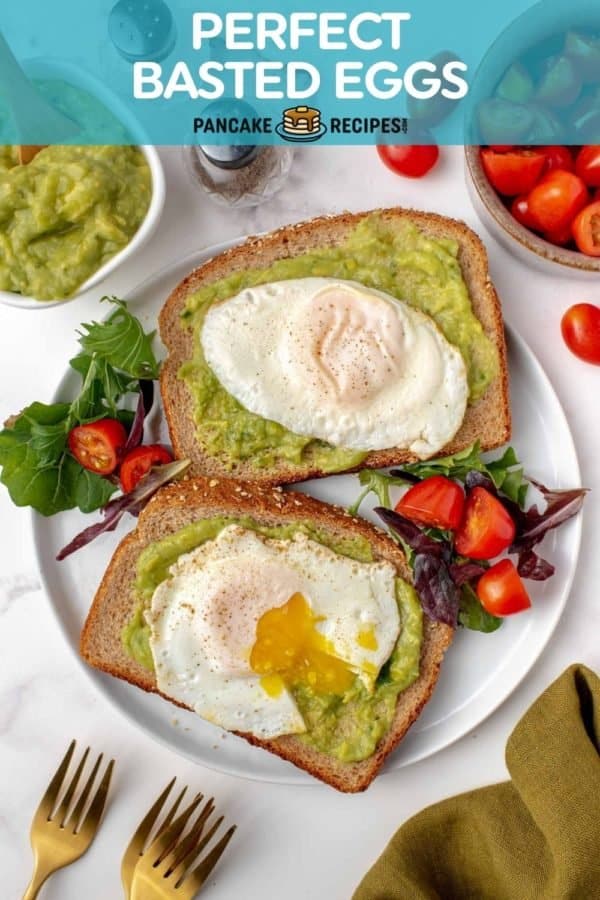How to Make Basted Eggs
Wondering what’s the fuss over basted eggs? We have all the details on why they’re so dang good, along with tutorials on how to make steam basted eggs and butter basted eggs.

For some people, the jammy or runny yolk that oozes out of a sunny-side-up, over easy, poached, or soft-boiled egg is the primary appeal. And then there are those who absolutely cringe at the thought.
No matter what category you fall into, you will enjoy basted eggs. They’re fried eggs that look a lot like sunny-side-up eggs, but the yolk can be cooked more completely, so it won’t run all over your biscuit or buttermilk pancakes. While they take a little more work than your average sunny-side-up egg or even scrambled eggs, your efforts will be richly rewarded.
And, unlike eggs over easy, eggs over medium, and eggs over hard, there’s no flipping involved!
If you’re in a hurry, try microwave scrambled eggs.
About this basted egg recipe
Basted eggs are made by either basting the eggs with butter, ghee, or oil while they cook, or by pouring water into the pan to create steam. Both methods cook the top of the egg while the bottom cooks on the pan surface.
Not only does this result in a firmer yolk without flipping, it also adds moisture and, in the case of butter basted eggs, lots of buttery flavor. (If you love the smell of butter melting in a skillet, butter basted eggs will totally be your jam!)
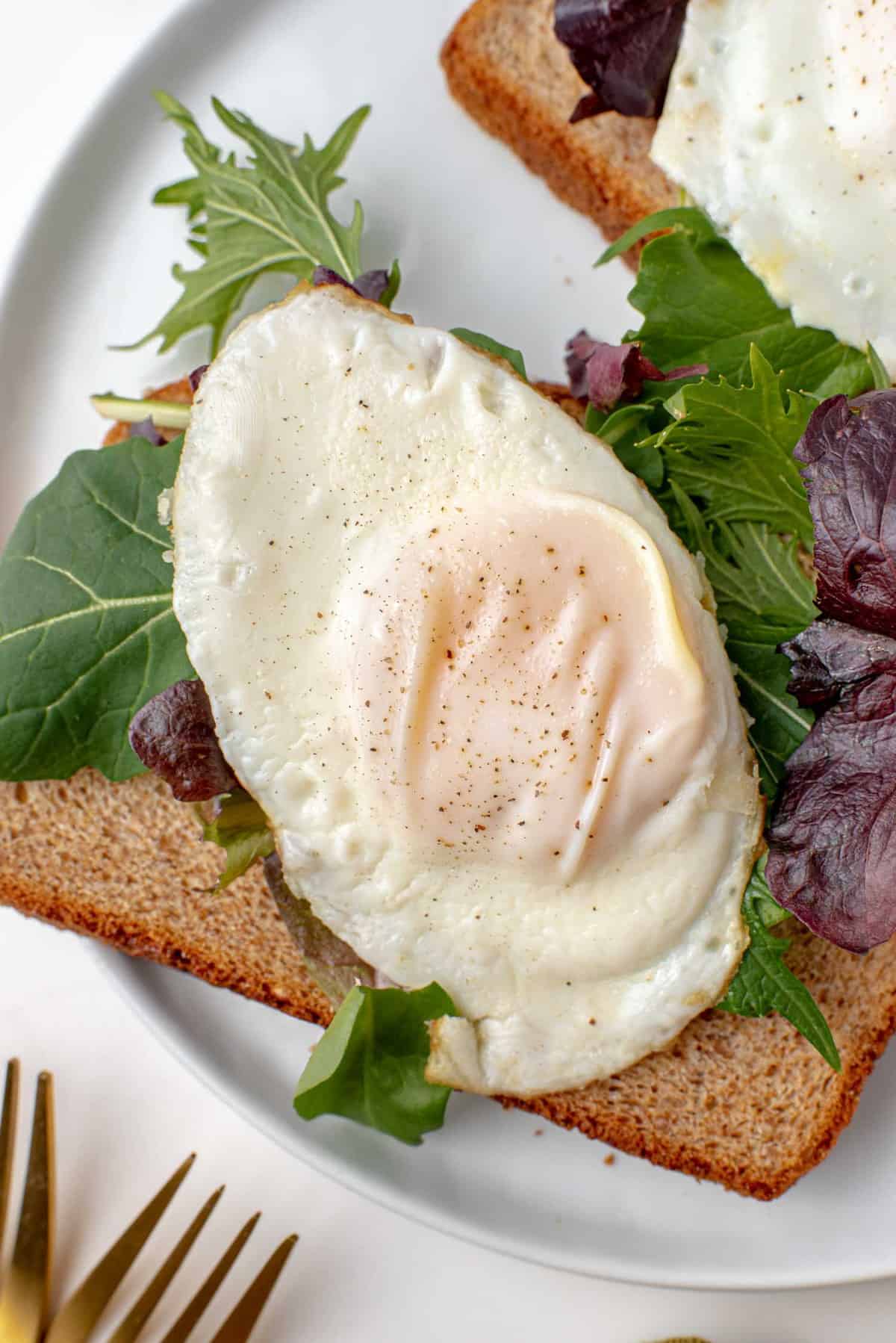
What you need
In this post, we’ll show you how to make both types of basted eggs. Here’s what you’ll need for each.
For butter basted eggs:
- Egg
- Butter, ghee, or olive oil
- Salt and pepper
For steam basted eggs:
- All of the above ingredients, plus very hot or boiling water
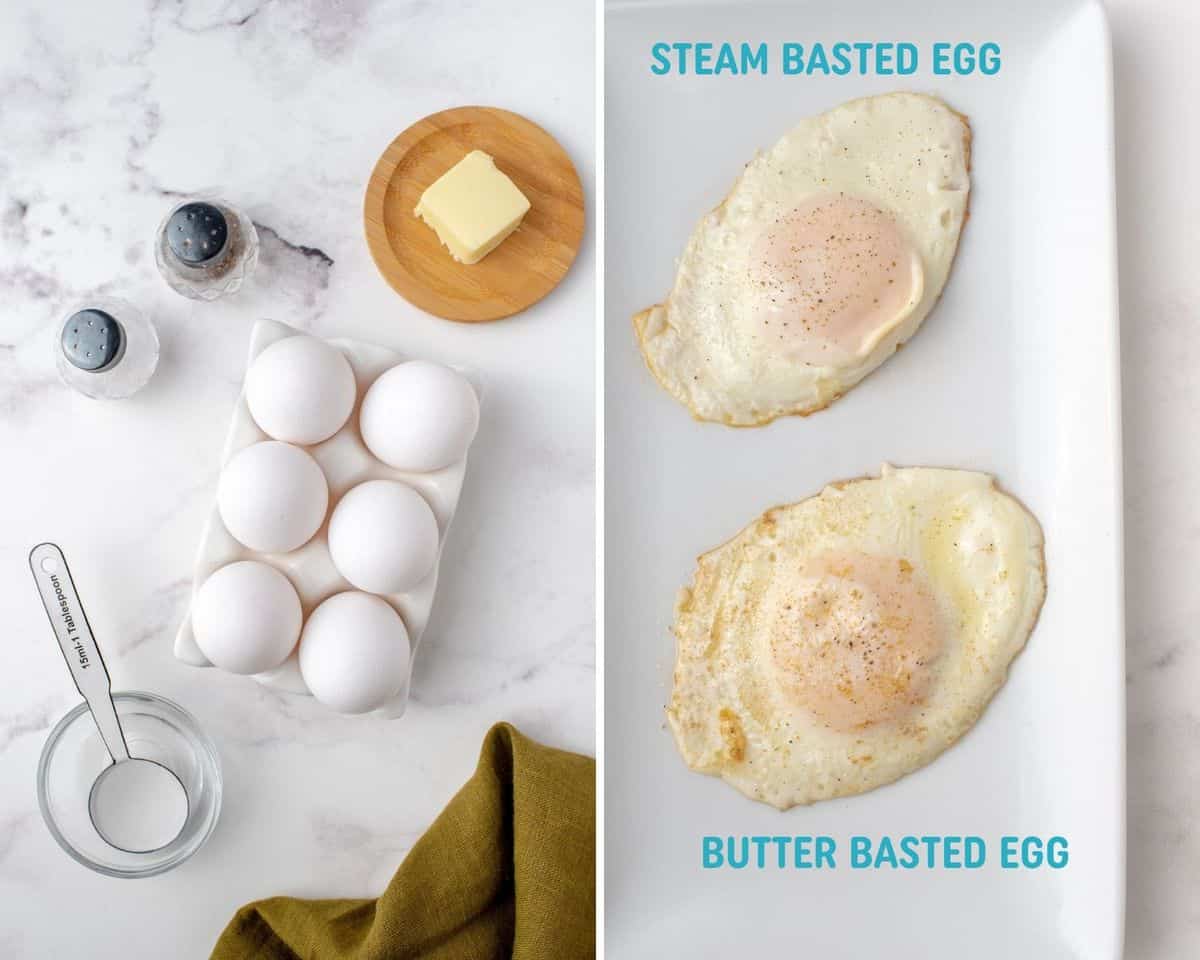
How to make them
Heat the pan. Set a nonstick frying pan over medium-low heat. Add the butter or oil; once it’s warmed, carefully add the egg. (Don’t break the yolk!)
Tip: If you’re not comfortable cracking your egg and adding it right to the pan, crack it into a small bowl before adding it to the pan. It makes it easier to fish out any stray pieces of eggshell, too!
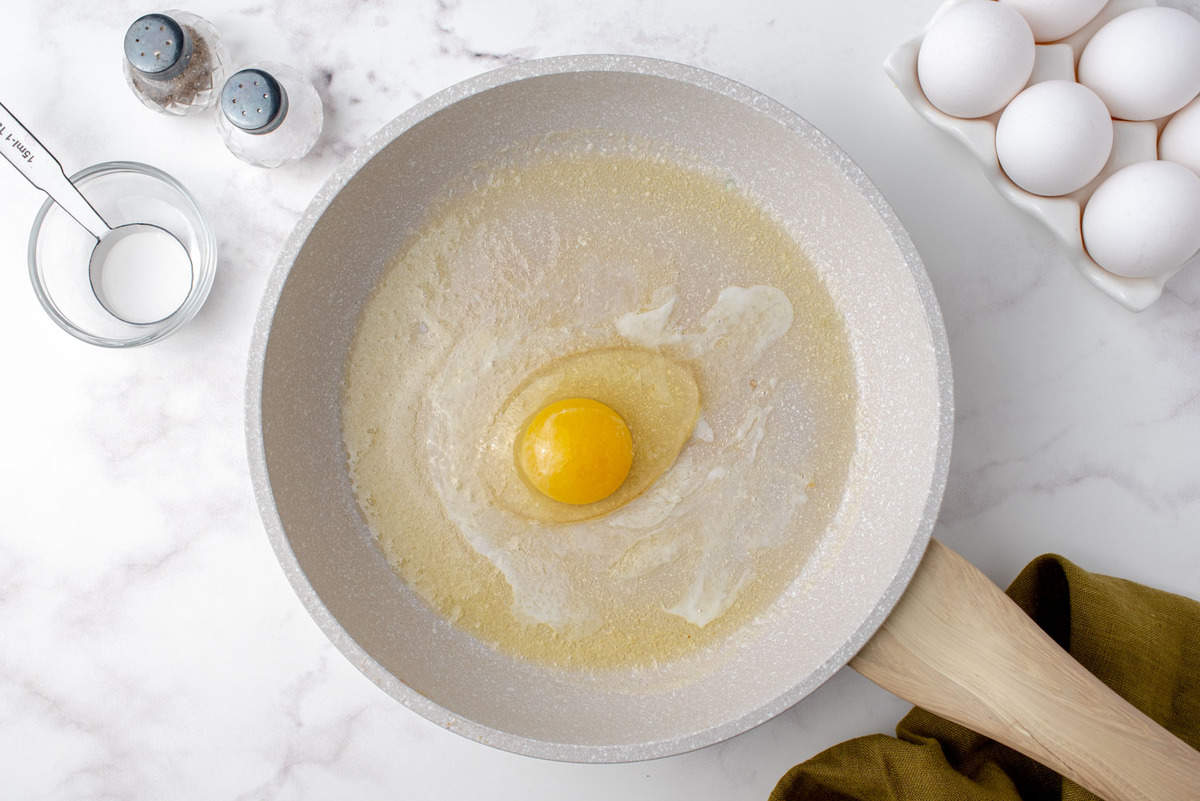
Set the white. Cook the egg uncovered until the white is mostly set, about 2 minutes.
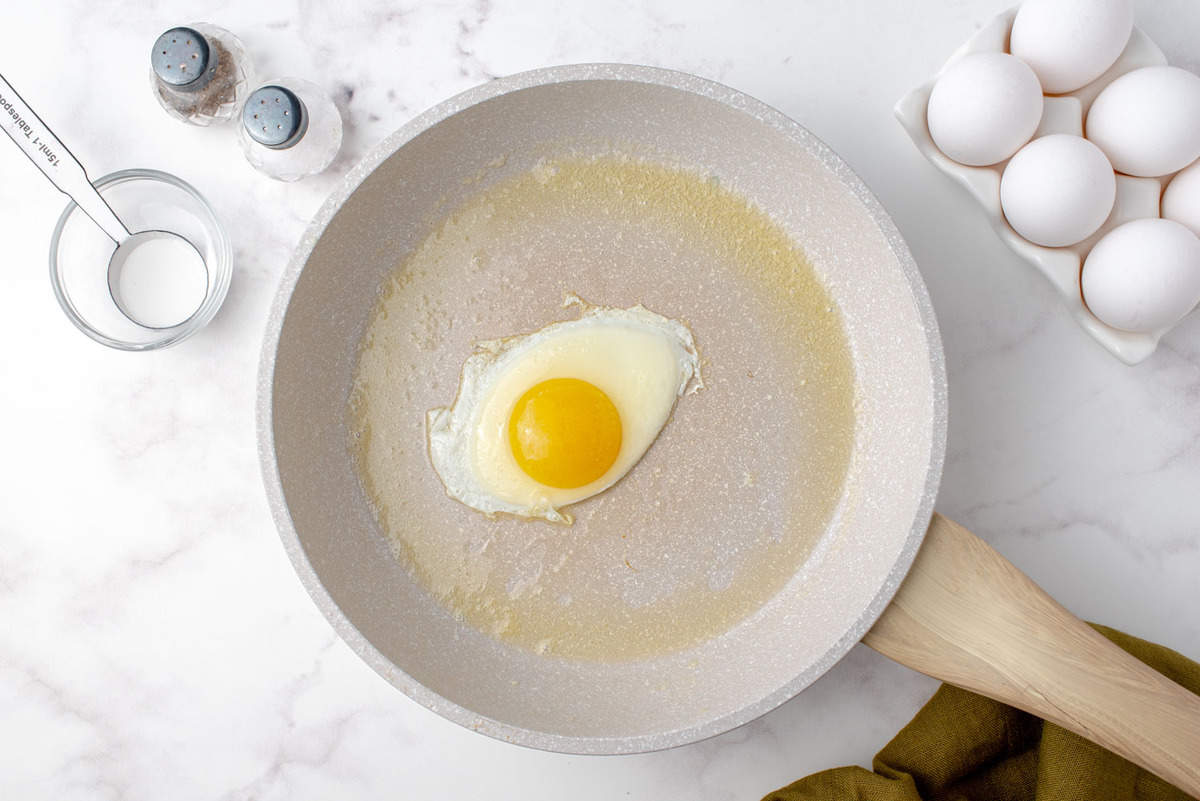
For a steam basted egg:
Pour in the water and cover the pan. Continue to cook the egg until the white is completely set and the yolk reaches your desired firmness—this should take a minute or two.
This is so easy and how I cook my eggs 75% of the time!
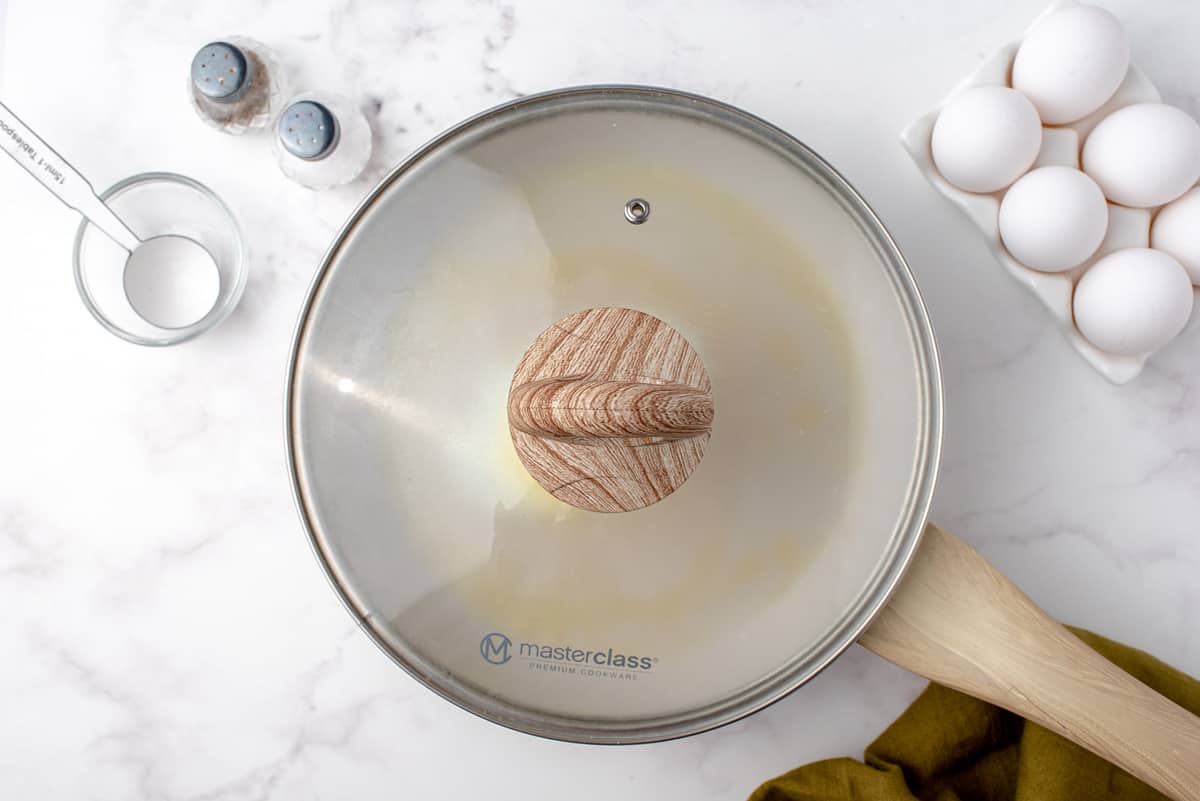
For a butter basted egg:
Tilt the pan so the butter pools on one side. Spoon the butter over the egg to cook it from the top. For a firmer yolk, spoon the butter over the entire egg; for a softer yolk, drizzle the butter around the yolk, not over it. Continue to baste the egg with butter until it reaches your desired firmness.
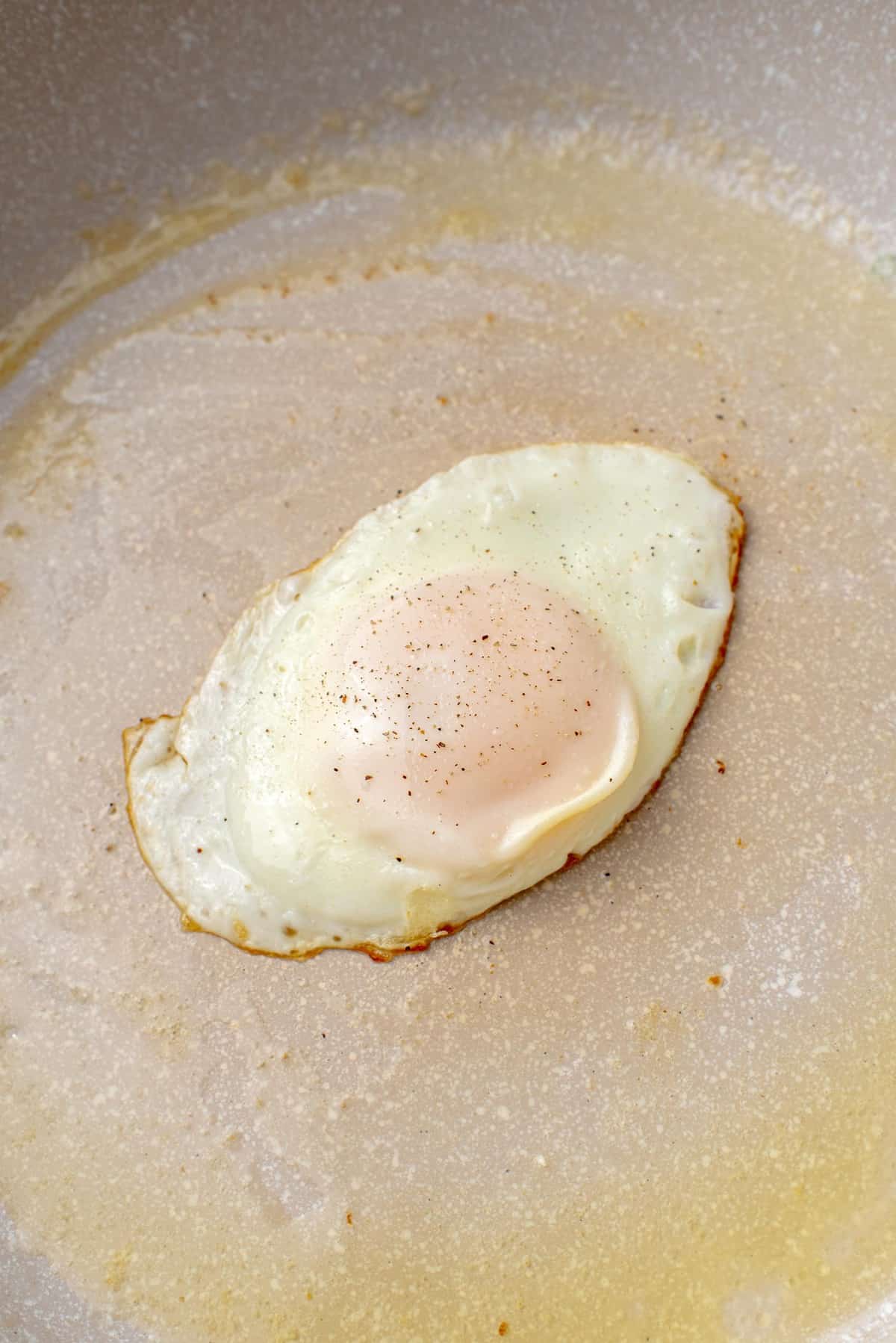
Finish. Remove the egg from the pan, then season with salt and pepper before serving. Serve basted eggs with a slice of toast, on a breakfast sandwich, or atop a plate of Sheet Pan Breakfast Hash. We also love them on avocado toast!
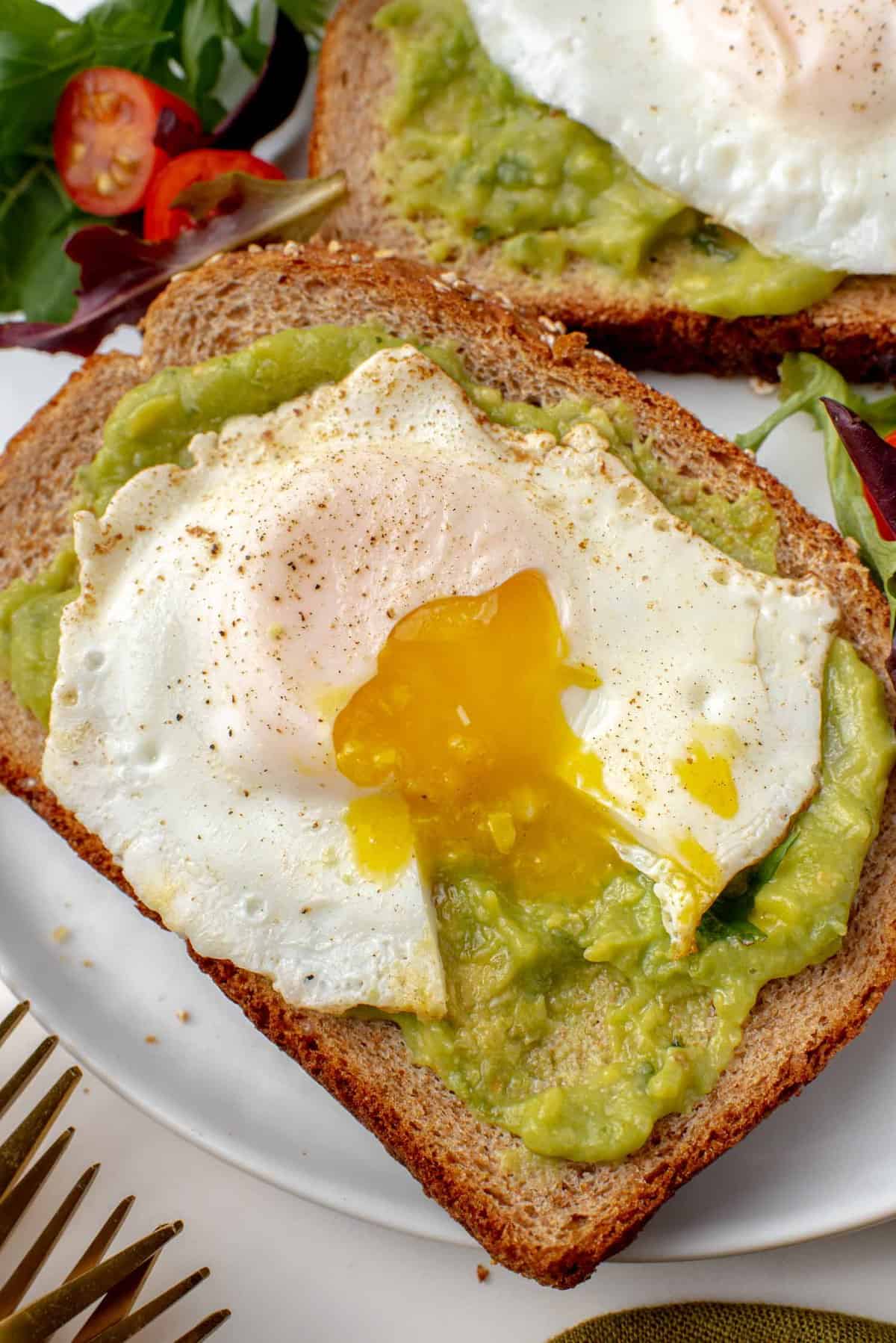
How to make these basted eggs your own
One of the best things about basted eggs is that they’re versatile! Here are some ways you can customize this recipe:
- Make more. You can double, triple, or quadruple the recipe. Use a bigger frying pan if needed, or cook the eggs in batches.
- Crisp them up. You can get crispier edges by increasing the heat to medium and reducing the cooking time by about a minute.
- Add a brown butter drizzle. If you’re making butter basted eggs, you can continue cooking the butter after you remove the egg until it’s brown and fragrant. Drizzle this over the egg or toast.
- Add some flavor. Add capers, minced garlic, or fresh herbs to the butter or oil to infuse your egg with flavor.
Make Ahead Ideas
Basted eggs are quick to make, so there’s no need to make them ahead. Fried eggs simply don’t store and reheat well, so I don’t recommend them for meal prep. A hard-boiled egg is much better for a make-ahead egg option!
Storage Suggestions
If you have leftovers, you can store them in an airtight container in the refrigerator for three to four days.
Reheating Tips
The best way to reheat basted eggs is in the microwave; heat them until they reach an internal temperature of 165ºF. Again, basted eggs aren’t a dish that’s well-suited to refrigerating and reheating, so don’t expect them to be as good as they are when they’re fresh!
More egg recipes
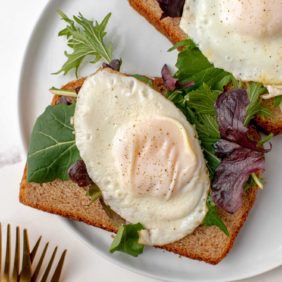
Get the Recipe: How to Make Basted Eggs
Ingredients
For steam basted eggs:
- 1 large egg
- 1 teaspoon butter, ghee, or olive oil
- 1 tablespoon very hot or boiling water
- salt and pepper to taste
For butter basted eggs:
- 1 large egg
- 1 tablespoon butter, ghee, or olive oil
- salt and pepper to taste
Instructions
For steam basted eggs:
- Heat a small, nonstick frying pan (with lid) over medium-low heat. Add butter, let melt, and then add egg, being careful not to break the yolk.
- Cook uncovered without moving the egg until the white of the egg is mostly set, or about 2 minutes. Add the hot water, cover pan and cook until the white of the egg is completely set and yolk has desired firmness (we find 1-2 minutes is usually sufficient).
- Remove from the pan immediately to stop cooking. Serve with salt and pepper.
For butter basted egg:
- Heat a small, nonstick frying pan over medium-low heat. Add butter. When butter starts to bubble, carefully add egg, being careful not to break yolk.
- Cook without disturbing for 1-2 minutes or until white begins to set. Carefully tilt the pan so that the butter pools towards one side. Use a spoon to spoon butter over the egg. If you like a firmer yolk, spoon it over the entire egg. If you like a softer yolk, avoid spooning the butter on the yolk. Keep basting egg with butter until egg is cooked to your liking. A runny yolk and firm whites should be achieved in 1-2 minutes.
- Remove egg from pan and season with salt and pepper.
Notes
- Recipe can be doubled, tripled, or quadrupled. If you want to cook more than four eggs, we recommend doing them in batches.
- For more crispy edges, increase heat to medium and reduce cooking time by 1 minute (unless a more firm yolk is desired).
- For butter basted eggs, if desired, when the egg has finished cooking, remove egg from pan and continue cooking butter until it starts to brown slightly. Immediately remove from the pan and drizzle over egg or toast.

